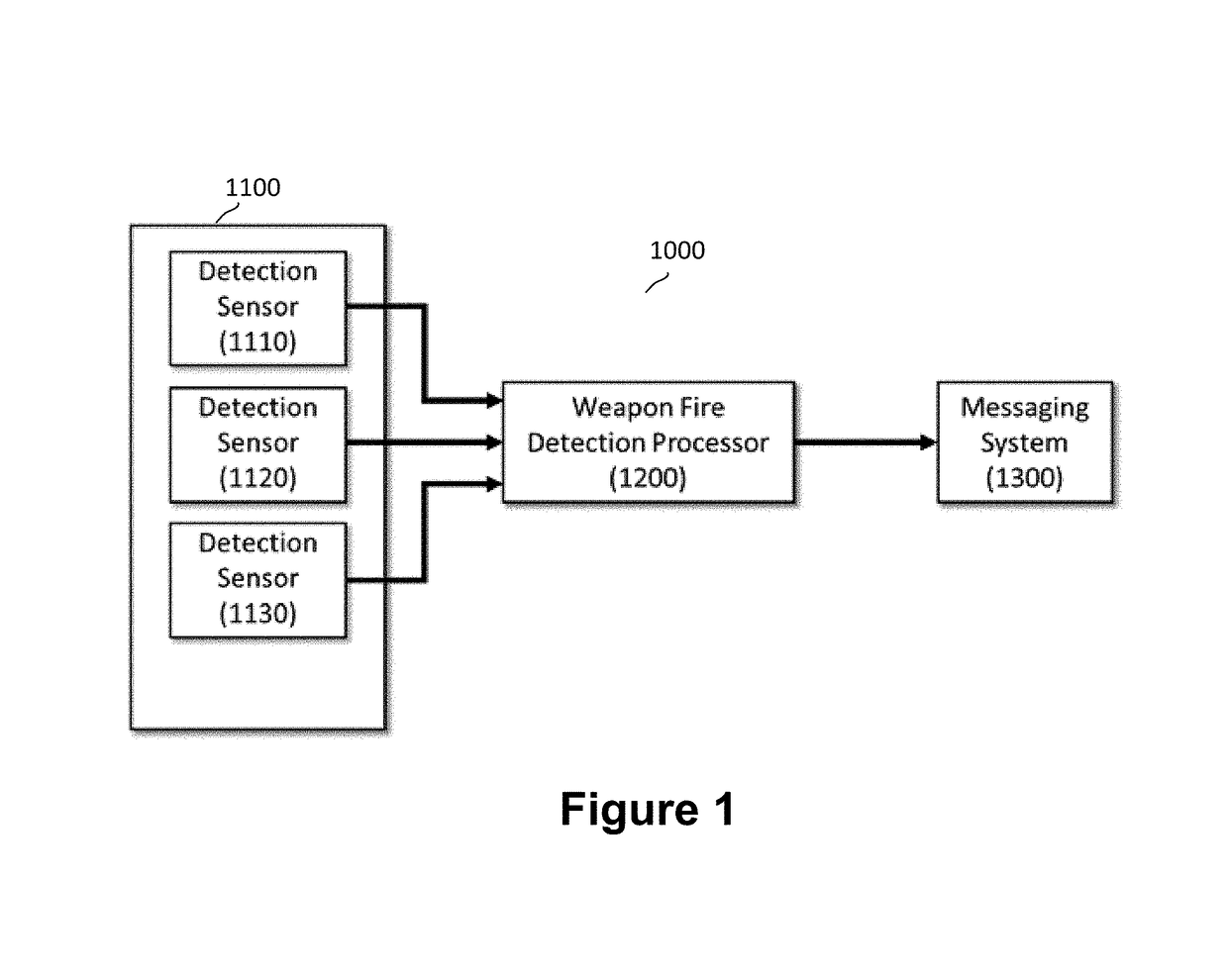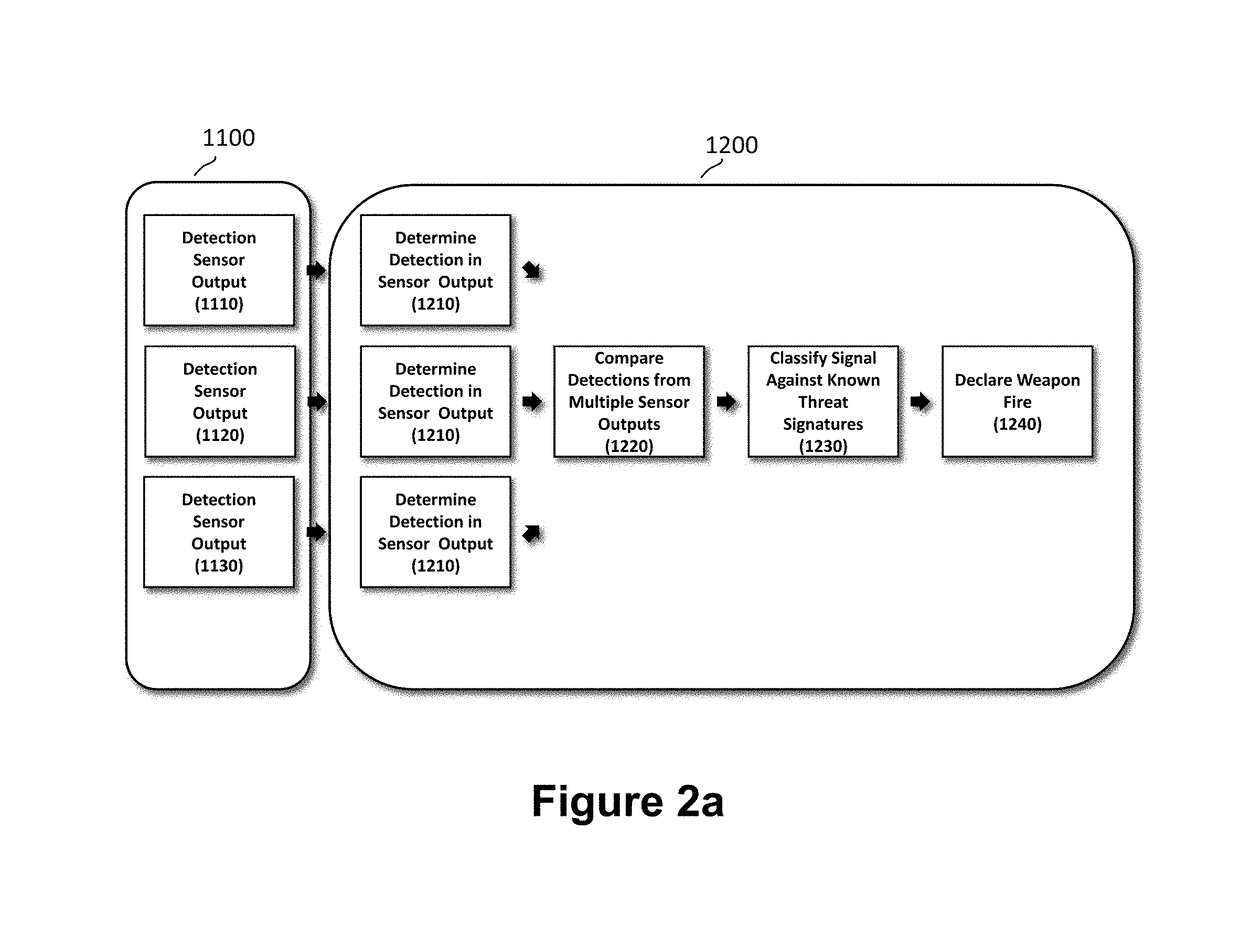Weapon fire detection and localization system for electro-optical sensors
a technology of electro-optical sensors and fire detection, applied in the field of detection systems, can solve the problems of clutter sources, complex detection methodologies, and -optical weapons fire detections often involve severely reduced signature intensities, and achieve the effect of minimizing false detections and high detection rates
- Summary
- Abstract
- Description
- Claims
- Application Information
AI Technical Summary
Benefits of technology
Problems solved by technology
Method used
Image
Examples
Embodiment Construction
[0016]The First Exemplary Weapon Fire Detection and Localization System.
[0017]FIG. 1 describes the first exemplary weapon fire detection and localization system. The system (1000) is comprised of a weapon fire detection imaging sensor system (1100), a processor (1200), and a messaging system (1300). The weapon fire detection imaging sensor system is comprised of three imaging detection sensors (1110, 1120, 1130), each of which images in a different spectral range. The video output of the detection sensor is provided as an input to the processor. The processor hosts the weapon fire detection and localization algorithm. The messaging system distributes the output results of the weapon fire detection and localization algorithm to other connected systems, providing an alert message.
[0018]FIG. 2a describes the first exemplary weapon fire detection and localization algorithm. For each imaging detection sensor (1110, 1120, 1130), the video output is provided to the processor. Weapon fire d...
PUM
 Login to View More
Login to View More Abstract
Description
Claims
Application Information
 Login to View More
Login to View More - R&D
- Intellectual Property
- Life Sciences
- Materials
- Tech Scout
- Unparalleled Data Quality
- Higher Quality Content
- 60% Fewer Hallucinations
Browse by: Latest US Patents, China's latest patents, Technical Efficacy Thesaurus, Application Domain, Technology Topic, Popular Technical Reports.
© 2025 PatSnap. All rights reserved.Legal|Privacy policy|Modern Slavery Act Transparency Statement|Sitemap|About US| Contact US: help@patsnap.com



